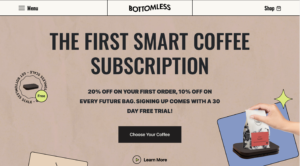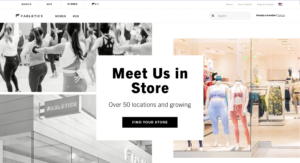
How To Stand Out In The D2C Space With Product Marketing
Direct-to-consumer brands grew a lot in the last decade. But much has changed since the first household names got their start with unforgettable videos and viral social media campaigns.
As Builtin explored in a recent article, the strategy that helped the first D2C companies soar is waning. The takeaway? Trying to secure as many subscribers as possible only works to a certain point; after that, D2C companies struggled to respond to what their core customers actually wanted.
So today, product teams working with D2C brands have to stay sharp to ensure they’re not lost in an increasingly crowded field. As we heard on our latest series of the Better Product podcast, often the best strategy a D2C brand can employ comes down to nailing good product marketing.
Align What’s Inside
First comes first: How can you stand out in the market if your teams aren’t working towards a shared vision?
While you should have a dedicated product team, aligning all of your D2C company’s teams around your overarching product vision can make or break how customers perceive you. In other words, D2C companies need to root their strategy in effective product positioning.
Take it from Tsega Dinka. Tsega began his journey in D2C with the industry pioneer Dollar Shave Club as one of the company’s first product managers. He later moved beyond product to become the company’s vice president of digital product.
After making the transition, Tsega turned his focus to aligning Dollar Shave Club’s product and non-product teams around shared goals. This approach offers several benefits:
- The product team is aware of the impact of their work on the market
- Non-product teams are educated to become advocates of their core product
- All teams are enabled to respond to who ultimately determines success: your customers
Value Efficiency
It’s one thing to build a D2C product. But it’s another to get to know your customers so well that, beyond responding to an existing need, you create efficiency that improves their broader lives.
Liana Herrera, co-founder & president of Bottomless, said it’s this principle that guided her team in launching their coffee subscription service. While there’s a lot of competition for quick & fresh coffee delivery, Liana took a personal experience with D2C inefficiency to teach herself to think differently. She realized that without enough focus on customer behavior, a lot of product could be wasted—leading to unhappy subscribers and damaging loyalty.
“If the whole experience isn’t frictionless for the customer, it’s going to build resistance to the brand,” Liana said.

Bottomless is one of many D2C coffee brands. But the company sets itself apart by providing subscribers with a smart scale so they can optimize how they drink coffee—meaning less waste, and more fresh brews.
So instead of letting her customers guess how much coffee they’ll drink in a given month, Bottomless takes their process a step further by sending a smart scale to subscribers that tracks how much they drink.
This adds an entire new dimension of value to the product. Bottomless solves a customer’s initial desire for fresh coffee, and makes their lives better by enabling them to waste less of it. The question becomes not just marketing the product for people who love coffee, but marketing a product that will make the process of buying coffee smoother.
Meet Customers Where They Are
A D2C brand can technically serve anyone, anywhere. But the best D2C brands stand out by understanding their markets through the power of product marketing.
While D2C brands primarily operate online, a number of them are opening physical retail stores, like eyeglass brand Warby Parker and luggage retailer Away. And these brands have found success because they made the decision to open physical stores for the right reasons.
Take it from Melanie Cummings, vice president of product for Fabletics. Melanie explained her D2C company figured out where to start selling their athletic wear by using A/B testing in different markets. Rather than just assume the Fabletics vision was needed everywhere, the company took the A/B model to examine which brick & mortar locations would succeed and why.

Physical retail stores can certainly be part of your D2C brand. In fact, they may be the key to untapped buyers and creating loyal fans of the people who crave an in-person experience. But to do this well, you have to leverage product marketing to understand the why behind it all.
Summary
Sticking to the core principles of product marketing will keep your D2C product not only relevant, but responsive to the changing needs within your customer base.



